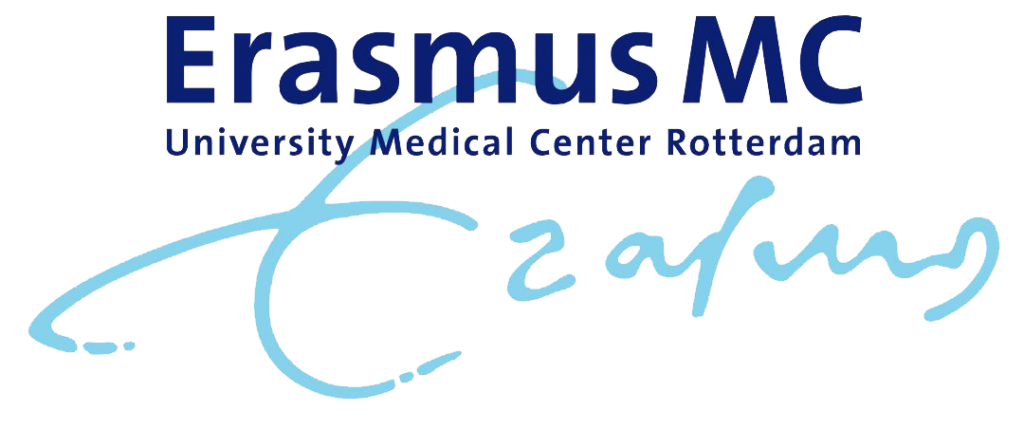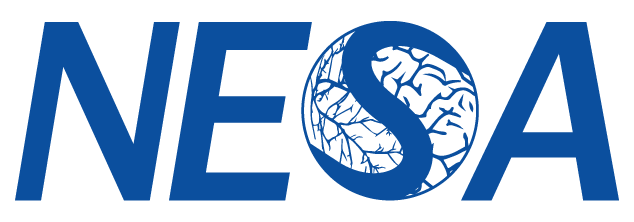Shortcut to

Amsterdam University Medical Center
Prof. Ed van Bavel, Dr. Inge Mulder, Dr. Jonathan Coutinho, Prof. Charles Majoie, Prof. Elga de Vries
Our Amsterdam translational stroke research group combines clinical and pre-clinical stroke research and we use this multidisciplinary approach to reduce the translational gap in stroke research. The clinical part is specialized in acute stroke treatment, addressing hemorrhagic and ischemic stroke, including aneurysmal subarachnoid hemorrhage and cerebral venous sinus thrombosis. Preclinical studies involve rodent models of acute ischemic stroke due to large vessel occlusions, micro-embolism and extravasation of particles and hypertension. We have a strong interest in inadequate reperfusion of the small vessels and capillaries during and after reperfusion in acute ischemic stroke. This is also known as the “no-reflow” phenomenon. We use in vivo optical 2-photon imaging, small animal MRI and ultrasound, combined with ex vivo tissue analysis using high-end microscopy, computational methods, and vascular structure and functional measurements. Using these techniques, we are able to investigate the spatio-temporal correlation of vascular mechanisms in cerebral stroke pathology. To unravel the underlying molecular mechanisms, we make use of multiple cell culture models using human cell lines such as vascular endothelial cells, neurons, pericytes and astrocytes.
Early career investigators: Marc Franssen, Moeed Khokhar, Kevin Mol, Yan Wang and Yusef Jondiah

Erasmus University Medical Center Rotterdam
Dr. Heleen van Beusekom, Prof. Aad van der Lugt, Prof. Diederik Dippel
Our focus is on ischemic stroke research with large gyrencephalic pig models. We perform studies on 1) improvement of endovascular interventions and 2) pharmacotherapeutic strategies to improve outcome of acute ischemic stroke. A strong translational component is possible by 1) the option to investigate the role of comorbidities like atherosclerosis, hypertension, diabetes, kidney disease, arterial thrombosis on outcome and 2) the use of clinical imaging modalities (MRI, CT, OCT). This context is important to predict successful translation to clinical studies.
Early career investigator: Aladdin Taha, Joaquim Bobi i Gibert, Sven Luijten

Leiden University Medical Center
Prof. Arn van den Maagdenberg, Dr. Jean-Philippe Frimat, Dr. Else Tolner, Prof. Marieke Wermer
Our research group focuses on translational research on paroxysmal brain disorders, among which stroke and migraine as both diseases can co-occur in many patients. We perform genetic research, aimed at identifying genetic factors that confer risk for both the common (genome-wide association studies) and the monogenic (next generation sequencing) forms of the diseases. We have generated transgenic mouse models (knock-in and overexpressor) mouse models with gene mutations previously identified in patients that showed the relevance of neuronal and vascular dysfunction. Our lab combines experimental interventions (MCAO, electrical stimulation, optogenetics with viral infections and interbreeding with transgenic lines) with molecular (-omics, immunohistochemistry), electrophysiology (EEG, multi-unit activity recordings), and vascular (laser doppler flow) and behaviorial readouts in freely moving mice. More recently, we are using human induced pluripotent stem cell and organoid-type technology in e.g. vessel-on-chip designs, to complement the in vivo studies in animals. Our basic neuro-research is closely linked with clinical research at the LUMC to ensure optimal translation of basic findings to the clinic.
Early career investigator: Nelleke van der Weerd
Maastricht University
Dr. Ana Casas, Prof. Harald Schmidt
The efficacy of drug discovery is in a constant decline. This poor translational success of biomedical research is due to false incentives, lack of quality/reproducibility and publication bias. In fact, drug discovery faces an efficacy crisis where non-effective single-target, and symptom-based rather than mechanistic approaches have contributed. Systems medicine opened a new concept of therapy focused on underlying disease mechanisms and shared genetic evidences. In line with a systems approach, the novel concept of network pharmacology emerged suggesting that several targets within the same disease mechanism should be simultaneously modulated towards an ultimately synergistic therapy. Following this therapeutic strategy, and focusing on one of the currently highest unmet medical need indications, brain ischemia, we have established a network pharmacology therapy for acute stroke which will be translated to a Phase II clinical trial at the beginning of 2021. Moreover, we are currently developing a biomarker-based stratification strategy for stroke patients to determine the most suitable treatment based on their impaired underlying pathomechanism, and therefore enhance future prognosis, predict the risk of recurrent stroke, and ultimately reach a personalised therapy.
Maastricht University II
Dr. Sébastien Foulquier
Our research group studies cerebral small vessel disease (cSVD), the most prevalent form of vascular cognitive impairment and dementia (VCID) and a major cause of stroke. We aim to reveal key pathophysiological mechanisms affecting the glio-vascular unit in cSVD. Our young team is based at Maastricht University and embedded within both cardiovascular and neuroscience research institutes. We are fascinated by the cerebral microcirculation and the complex interplay between endothelial cells and surrounding glial cells. We carry experimental work ranging from cell experiments to behavioural and in vivo imaging studies.
Website: https://gliovasclab.com

Radboud University Medical Center Nijmegen
Prof. Amanda Kiliaan, Dr. Maximilian Wiesmann
Our research group “Translational Neuroanatomy; Cerebral Circulation and Cognition in Mice and Men” focuses on vascular risk factors for cerebrovascular and neurodegenerative disorders. In mouse models for hypertension, stroke, obesity and AD, impact of nutrition and exercise is studied with 11.7T MRI on cerebral blood flow (CBF), inflammation, brain metabolism and functional and structural connectivity, in combination with cognitive and motor skill tests. In human post mortem brains cerebral small vessel pathology as risk factor for stroke is studied using high field (7T) and ultra-high field (11.7T) MRI, polarized light imaging, and light sheet microscopy. In morbid obese persons who undergo bariatric surgery, CSVD MRI markers like white matter lesions and microinfarcts, CBF and integrity of white/grey matter in correlation with cognition and microbiome is investigated with Rijnstate hospital and TNO.

University Medical Center Utrecht
Prof. Rick Dijkhuizen, Dr. Bart Franx, Dr. Annette van der Toorn
Our research focuses on the development and application of imaging techniques to assess brain structure and function in health and disease, with a particular focus on preclinical MRI in stroke. We aim to elucidate mechanisms and predict outcome relating to pathophysiology, recovery processes and treatment effects from acute to chronic stages after cerebrovascular injury. Our lab facilities include two preclinical MRI scanners (at 7.0 and 9.4 T), a HD-CCD camera for in vivo optical imaging, EEG/ECoG-electrode arrays and rodent-specific transcranial magnetic stimulation (TMS) equipment, and we have experience with various experimental stroke models. Through collaborations with different local, national and international groups we can accomplish a strong multidisciplinary research approach. Our studies are orchestrated from a strong translational perspective through parallel studies in animal models and patients, close dialogue with clinicians, and sharp attention to bridging findings from bench to bedside. Website: www.dijkhuizenlab.nl
Early career investigators: Esther van Leeuwen, Vera Wielenga and Linda Reiland
University Medical Center Utrecht II
Prof. Elly Hol, Dr. Mervyn Vergouwen
Aneurysmal subarachnoid hemorrhage is a devastating subtype of stroke affecting relatively young people. The case-fatality is high (about 35%) and many survivors have long-term disability or permanent cognitive sequelae, which reduce quality of life, and impede work reintegration and participation in social activities. The cause of these cognitive deficits is still unknown, which hampers the development of effective therapies to prevent or reverse these cognitive deficits. Our research group aims to elucidate the cause of these cognitive deficits by focusing on the inflammatory response after subarachnoid hemorrhage. Specifically, we study the biology of the immune cells of the brain (the microglia), the astrocytes, and synapse (dys)function, in order to identify targets for innovative drugs.
University Medical Center Utrecht III
Dr. Cora Nijboer
Within the Department of Developmental Origins of Disease (DDOD) of the UMC Utrecht the main focus is on the developing brain and especially on brain damage in the newborn. We study how adverse events early in life like birth asphyxia, neonatal stroke and (extreme) preterm birth affect neurodevelopment and outcome later in life. As current therapies for neonates with brain damage are very limited, our main mission is to develop new treatment strategies for these patients, using different experimental in vitro and in vivo models. One of our major research lines is focused on intranasal mesenchymal stem cell (MSC) therapy to repair the damaged neonatal brain after ischemic injury. Within this research line we study the regenerative mechanisms, the migratory capacity and the secretome of intranasally applied MSCs as well as optimization strategies for cell-based therapy. Website: https://www.umcutrecht.nl/en/research/researchers/nijboer-cora-h-a—cha
Early career investigators: Judit Alhama Riba, Myrna Brandt, Eva Hermans, Chantal Kosmeijer, Sara de Palma, Tessa Roelofs, Caroline de Theije

University of Twente
Prof. Jeannette Hofmeijer and Dr. Joost le Feber
The Clinical Neurophysiology group at University of Twente aims to unravel the pathophysiology of neuronal metabolic stress and recovery, and establish treatments to modulate recovery. To achieve this, we combine electrophysiological measurements in patients, in vitro models, and biophysical models. Particularly, we use rodent or human (iPSC) based cultured neuronal networks on multi-electrode arrays (brain-on-a-chip), and investigate neuronal responses to simulated ischemia and potential treatments. We combine electrophysiological and optical read-outs to relate neuronal function to cellular processes. We closely collaborate with stroke- and intensive care units to associate neuronal factors with clinical recovery and translate findings towards clinical trials.

Vrije Universiteit Amsterdam
Dr. Huub Maas
The overall objective of our research is to unravel the complex interactions between the musculoskeletal and neural systems during movement. Animal models are exploited to investigate the changes in neural control of movement and secondary changes in skeletal muscle properties in response to neurological and musculoskeletal diseases. Neuromuscular control (EMG), muscle mechanical conditions (tendon forces, fascicle lengths) and joint kinematics are recorded during various tasks in the freely moving animal prior to and after an experimental stroke. Also, muscle mechanical, morphological and sensory characteristics are assessed. We specifically focus on the processes of spontaneous recovery from stroke and whether this involves restitution or substitution of motor control. Website: https://www.human-movement-sciences.nl/nm/scientific-staff/huub/
